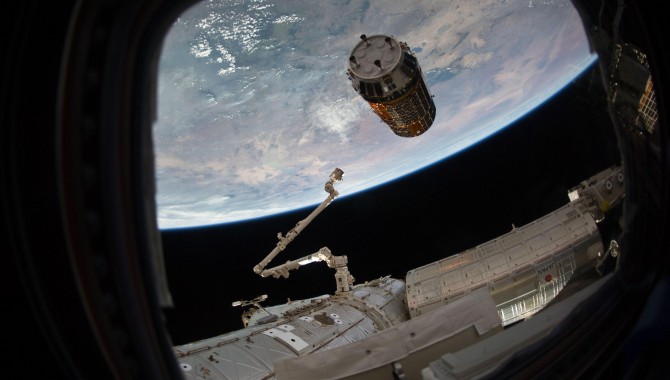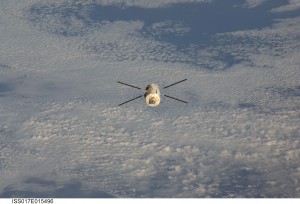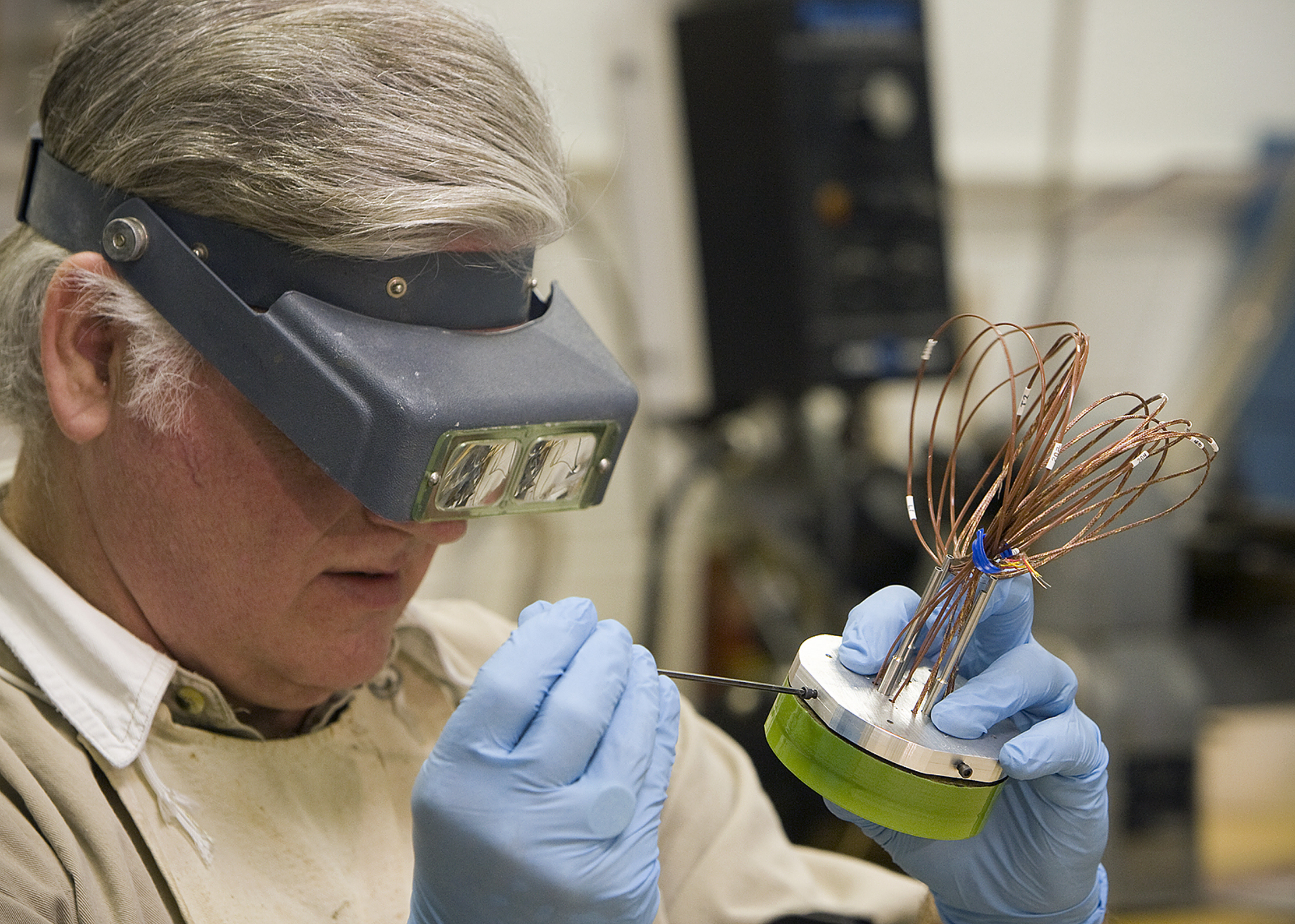
Based on an interview with Lyn Wigbels
The International Space Station (ISS) is a technological marvel. The size of a football field, with a mass of almost one million pounds, it has been continuously inhabited by astronauts and cosmonauts for more than ten years. A complex of modules that include laboratories, living quarters, a gymnasium, and observation areas, it circles Earth nearly sixteen times a day at an altitude of more than 200 miles.
The agreement would need to be clear and specific enough to avoid disputes and incompatibilities but also flexible enough to deal with the unexpected situations that would undoubtedly arise during the stations lifetime of thirty years or more.
The ISS is also a marvel of international cooperation. Somehow the space agencies and governments of multiple countries found a way to agree, not only on the technical standards that allow components developed by the agencies of different nations to function as a single unit, but also on issues of management and usage. Lyn Wigbels, who participated in planning and negotiation for NASA, reflects on the long, complex, and ultimately successful process.
It began around 1980, with preliminary studies of how a permanently orbiting facility might be used. Applying lessons learned from international cooperation on the Space Shuttle, NASA engaged directly with Canadian, European, and Japanese space agencies from the beginning, prior to a U.S. decision to develop the space station. NASA realized that it was necessary to develop a different cooperative relationship for the next human spaceflight program, one giving all partners a stake in its long-term operation and utilization. Although each of those agencies and NASA conducted their own utilization studies, the teams met regularly to discuss their ideas as well as potential hardware contributions to the finished space station. These Phase A, preliminary analysis studies were hypothetical—how might an international space station be used if it were built?—but the process of developing utilization concepts began to build the relationships that the later agreement would depend on. And they generated shared ideas of what an international framework for cooperation might look like.
From Concept to Commitment
In his 1984 State of the Union speech, President Ronald Reagan directed NASA to “develop a permanently manned space station” within a decade and invited other countries to participate in the effort and share in the benefits an orbiting laboratory could provide. The space station went from being a possibility to being a program, at least on the United States part.

Being able to use their own space transportation systems was an important part of ISS negotiations with international partners. In this photo, ESA’s “Jules Verne” ATV separates from the ISS on Sept. 5, 2008.
Photo Credit: NASA
Discussions began at the political as well as the technical level, involving the governments of the United States, major European spacefaring nations (the United Kingdom, Germany, France, Italy), Japan, and Canada. Meanwhile, the space agencies negotiated agreements covering cooperative activities during the next phase of the program, the preliminary design phase. As with the first phase, there was no commitment to future cooperation at this time, but efforts began to construct an agreement that would cover commitments for the lifetime of the space station program.
Wigbels led the internal agency process of drafting NASA’s version of an international agreement for the design, development, operation, and utilization of the station. The challenge was considerable: to come up with a plan that would satisfy groups within NASA and the U.S. government and would also be acceptable to other space agencies and their governments. The team working on the draft had to understand what NASA needed and the U.S. government required as well as what the partners needed to make the political decision to invest in the space station. In addition, the agreement would need to be clear and specific enough to avoid disputes and incompatibilities but also flexible enough to deal with the unexpected situations that would undoubtedly arise during the stations lifetime of thirty years or more.
One of the trickiest issues was how to devise a management structure that would give all the partners a say but would ensure clear, timely decisions about station development and operations. Another was to develop rules to organize use that would satisfy all the instance, would research projects be chosen by peer review (as at CERN, the international high-energy physics facility), or would each partner make its own choices; and would the partners use only their own research facilities or would they share them?
Two factors made this process successful. One was involving all interested parties at NASA in the formulation of the initial agreement that would be used to initiate the international negotiations. The International Cooperation Working Group (ICWG) included members from affected NASA program offices and centers. It had technical and operations people as well as lawyers and management. Simultaneously, Peggy Finarelli led discussions with the State Department and other government agencies to ensure the agreement would address the complex political needs of other agencies in the U.S. government, as well as the U.S. Congress. This process resulted in an agreement that NASA presented to its potential international partners early in the preliminary design phase. It then took months of bilateral and multilateral discussions and consultations between and among space agencies and their governments to arrive at decisions that these many and varied parties could agree on. Wigbels was a key member of NASA’s negotiating team, which was led by Finarelli. Wigbels was responsible for updating the agreements following each negotiation session. She continued to work with the ICWG to develop solutions to issues raised in the negotiations.

ISS continues to provide new and interesting observations from space, including this image of Aurora Australis, accompanied by star streaks and air glow, recorded by one of the ISS Expedition 31 crew members.
Photo Credit: NASA
Simultaneously, NASA worked with the State Department on negotiations with the governments of Canada, Japan, and European Space Agency member nations on an intergovernmental agreement that would capture the political commitments of these governments and address government-level policy and legal issues. The space agencies participated in the government-level negotiations, which were paced in a way to enable the space agencies to develop the technical, programmatic, and management structure for the program in the agency-to-agency negotiations. Wigbels notes that this process was essential. Otherwise, the governments might have made choices that could have been unworkable in the implementation of this large-scale research and development project. Likewise, the space agencies could have made programmatic decisions that might not have received government approval.
The success of the negotiations was based on understanding and respecting international partners’ needs. Multiple negotiation sessions were held on numerous drafts of the agreement that led to an understanding of what each partner needed in order to be able to enter into cooperation. While some of these needs were known at the beginning, such as matching the benefits received to the investments made, others, such as the management structure and how the utilization would be apportioned, were only understood as the partners grappled with the many facets of the long-term program. Respecting each partners needs and working through various alternatives to address them ultimately led the partners to decisions that all could embrace. For example, two provisions—agreeing that the international partners would try to minimize the exchange of funds, including the use of barter, to offset their launch and operations costs, and giving partners the right to use their own government or industry transportation systems as long as they were compatible with the station—were key steps toward concluding the agreements. These laid the groundwork for subsequent agreements with Europe and Japan on the use of the European automated transfer vehicle (ATV) and the Japanese H-II transfer vehicle (HTV) in the second round of space negotiations involving the Russians. (The negotiations with the Russians are another story, as complex as this one.)

The unpiloted Japanese Kounotori 2 H-II Transfer Vehicle (HTV2) approaches the ISS, delivering more than four tons of food and supplies to the space station and its crew members.
Photo Credit: NASA
Not surprisingly, management issues proved trickier than technological decisions. In keeping with the international, cooperative nature of the ISS, consensus is an important principle. A spacecraft cannot be run by committee, however. As the Japanese negotiators remarked, “It’s one big boat out there in space.” Ultimately, if consensus cannot be reached, someone has to be responsible for clear and timely decisions, especially in potential emergency situations. As the biggest contributor to the ISS, NASA has that final say when consensus cannot be readily achieved. When and if partners disagree with a decision, they can appeal to a program coordination committee for development issues or the multilateral coordination board for operations and utilizations issues and, if that proves unsatisfactory, to the heads of agencies. While many big challenges have confronted the ISS partnership, the management mechanisms have stood up to the tasks. Importantly, since the agreements were signed, the partners have sought and almost always achieved consensus through the lifetime of the ISS.
Flexibility Put to the Test
The flexibility built into the agreement includes the provision that current partners can share their utilization allotments with others, and Wigbels led the NASA negotiations with the Italian Space Agency to provide logistics modules under this provision. The Columbia accident, which created delays and higher costs, was obviously unforeseen, but the flexibility of the agreement and the strength of the ISS partnership made the necessary adjustments possible. Russia’s Soyuz and Progress vehicles filled the void left by Columbia until the Space Shuttles began flying again and continue in that role today along with the European ATV and Japanese HTV. Now the likelihood of U.S. commercial providers supplying the station is another development in the evolving International Space Station partnership.
Related Links
- International Cooperation
- Space Station Laboratories
- Interactive Space Station Reference Guide









